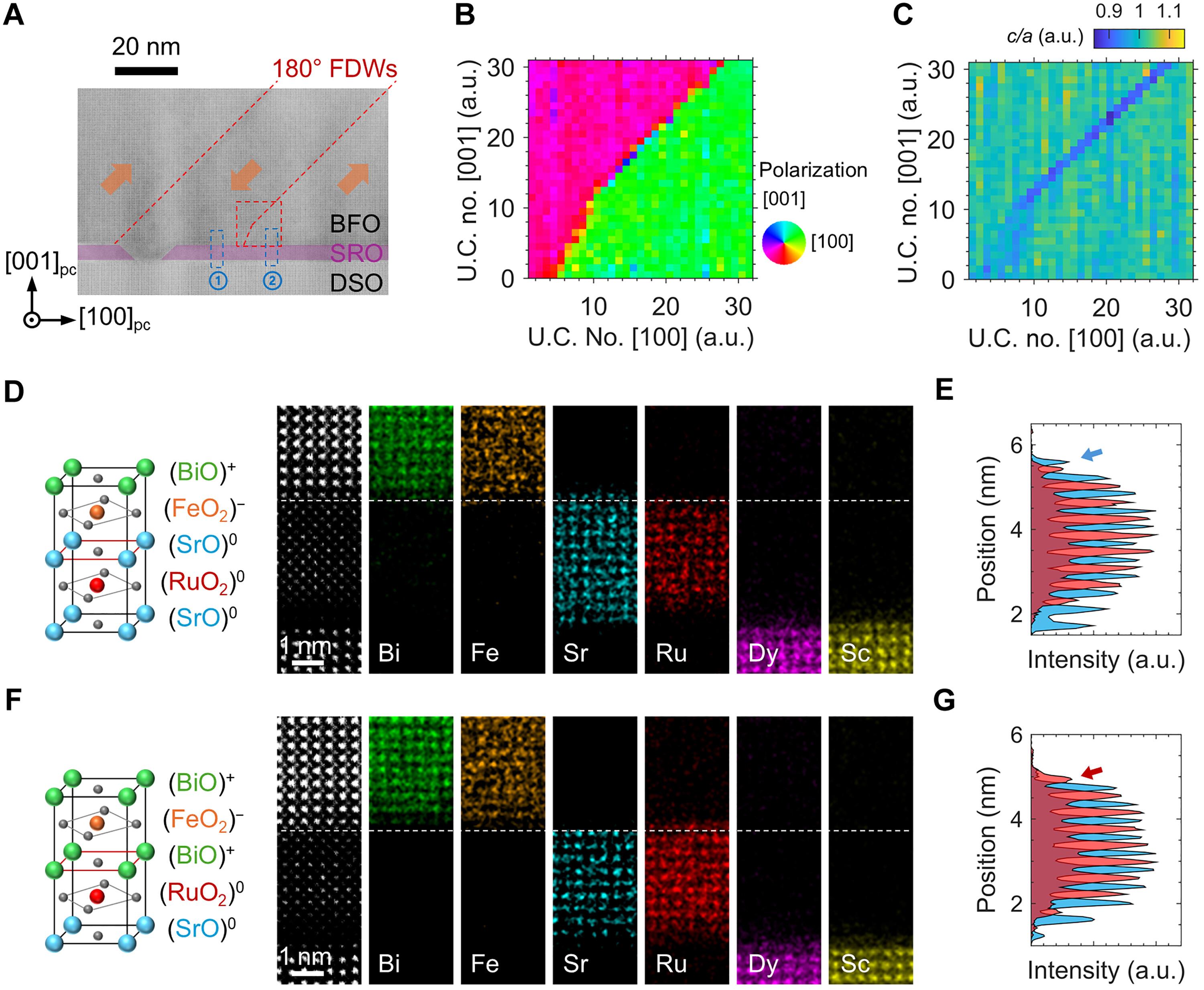静电纳米掩模在铁电薄膜中形成180°畴壁
IF 12.5
1区 综合性期刊
Q1 MULTIDISCIPLINARY SCIENCES
引用次数: 0
摘要
铁电畴壁(FDWs)表现出独特的结构和电子特性,使其成为下一代纳米电子学中有前途的功能元件。然而,实现纳米级精度和可控极化域的fdw的确定性创建仍然是可扩展fdw器件制造和电路设计的重大挑战。在这里,我们展示了一种通过调整界面静电剖面来实现FDW工程的策略。使用srruo3岛作为“纳米掩模”,我们在空间上调节界面原子端部,以产生交替的正负内置电场。电场切换极性的边界驱动bifeo3薄膜中180°FDWs的形成。这一机制通过理论计算和直接实验观察得到了验证。此外,原子尺度分析揭示了FDW的局域晶格畸变、结构手性以及srruo3岛的边缘效应对FDW成核位置精度的影响。我们的发现为未来FDW纳米电子学的可扩展和可控的自下而上的FDW生长技术铺平了道路。本文章由计算机程序翻译,如有差异,请以英文原文为准。

Electrostatic nano-mask patterned 180° domain walls in a ferroelectric film
Ferroelectric domain walls (FDWs) exhibit exotic structural and electronic properties, positioning them as a promising functional element for next-generation nanoelectronics. However, achieving the deterministic creation of FDWs with nanoscale precision and controlled polarization of domains remains a substantial challenge for the scalable FDW-device fabrication and circuit design. Here, we demonstrate a strategy for FDW engineering by tailoring the interfacial electrostatic profile. Using SrRuO3 islands as “nano-masks,” we spatially modulate the interfacial atomic termination to generate alternating positive and negative built-in electric fields. The boundaries where the electric field switches polarity drive the formation of 180° FDWs in BiFeO3 thin films. This mechanism is validated through theoretical calculations and direct experimental observations. Furthermore, atomic-scale analysis reveals localized lattice distortions, structural chirality of the FDWs, as well as the edge effect of SrRuO3 islands on the position precision of FDW nucleation. Our findings pave the way toward a scalable and controllable bottom-up FDW-growth technique for future FDW nanoelectronics.
求助全文
通过发布文献求助,成功后即可免费获取论文全文。
去求助
来源期刊

Science Advances
综合性期刊-综合性期刊
CiteScore
21.40
自引率
1.50%
发文量
1937
审稿时长
29 weeks
期刊介绍:
Science Advances, an open-access journal by AAAS, publishes impactful research in diverse scientific areas. It aims for fair, fast, and expert peer review, providing freely accessible research to readers. Led by distinguished scientists, the journal supports AAAS's mission by extending Science magazine's capacity to identify and promote significant advances. Evolving digital publishing technologies play a crucial role in advancing AAAS's global mission for science communication and benefitting humankind.
 求助内容:
求助内容: 应助结果提醒方式:
应助结果提醒方式:


